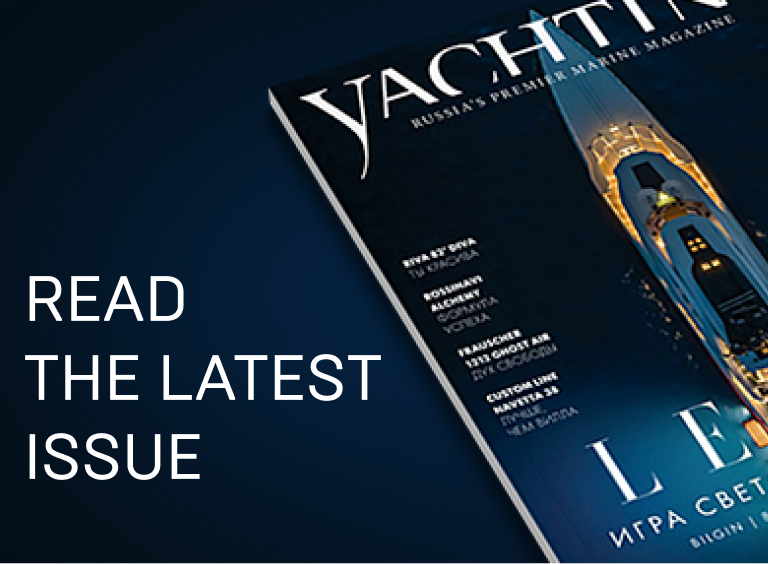---Raja-Ampat.jpg)
---DSC06320.jpg)
---IMG_6313.jpg)
---IMG_7621.jpg)
---IMG_6642.jpg)

---IMG_6686.jpg)
---IMG_7148.jpg)
---IMG_6792.jpg)
---DSC06429.jpg)
---Raja-Ampat.jpg)
---DSC06320.jpg)
---IMG_6313.jpg)
---IMG_7621.jpg)
---IMG_6642.jpg)

---IMG_6686.jpg)
---IMG_7148.jpg)
---IMG_6792.jpg)
---DSC06429.jpg)
Sailing yachts
08.07.2024

Arsenii Zaguljaev
The wooden Lambo
In Bali, you can set sail into the ocean aboard a 50-meter sailing yacht built in traditional Indonesian style, featuring interiors adorned with Hermès, Dedar, and Philippe Starck designs.
---IMG_6686.jpg)
“Lambo” isn’t a reference to Lamborghini, as you might think. It’s the name of a traditional Indonesian pinisi vessel. Even the most seasoned sailors, familiar with modern yachts, will find sailing a pinisi an intriguing experience. Since the 14th century, these two-masted ships have been built on Sulawesi and other islands of the Indonesian archipelago. Structurally, they resemble Arabian dhows, commonly seen in the Emirates or Oman, while their rigging is reminiscent of European schooners. Unlike European ships, the gaff of the large mainsail (on the forward mast) is fixed and doubles as a crane for loading cargo. For added strength, two angled beams are often installed, merging at the top to form the mast.
Traditional pinisi vessels typically reach up to 35 meters in length, but modern interpretations can be larger. They are often equipped with engines, and their interiors can rival the luxury of a superyacht. If the vessel has a flat stern, it’s called a “lambo” or “lamba,” while a rounded stern designates it as a “peleri.”
---IMG_6792.jpg)
The Vela measures 50 meters in length and is classified as a lambo, thanks to its beach club located on the transom. Built in South Sulawesi at the Pak Haji Wahab shipyard, the yacht was designed by American naval architects to optimize performance and safety. It was launched in August 2022. The double keel increases the weight below the waterline, while the seawater cooling system enhances onboard comfort. The Vela’s stringers are made of carbon, and its masts are constructed from steel. The main mast serves as a crane for launching and retrieving toys and tenders, freeing up deck space for dining, relaxation, and socializing, while also improving charter operations.
The hull is made of steel, and the two-tier superstructure is almost entirely crafted from teak. This choice of wood gives the superyacht an unmatched charm. Walking barefoot on sun-warmed teak decks, touching the wooden walls, and watching the teak change hues at sunset—from golden rum to deep chocolate before disappearing into the darkness of an equatorial night—is a sensory delight. The subtle aroma of damp wood adds to the experience, making it a feast for all the senses.
---IMG_7148.jpg)
That said, this yacht isn’t for those who prefer a rustic retreat. Its interiors are ultra-modern, seamlessly blending elements of Indonesian craftsmanship with indigo-dyed fabrics from East Bali, teak furniture, Hermès, Dedar, and Rubelli textiles, and brass door handles by Olivari. The bathrooms are finished with handmade terracotta tiles and marble, while the fixtures are designed by Philippe Starck. Art pieces were curated in collaboration with Bali’s leading galleries and primarily feature works from contemporary Indonesian artists. The owners are committed to sustainability: no plastic is used onboard. Bamboo toothbrushes and all-natural bath products are provided for guests.
The Vela accommodates up to six cabins, including four on the lower deck, a VIP suite on the main deck, and a master suite with its own private terrace.
Guests can enjoy cocktails in a spacious lounge with panoramic views, complete with a bar and wine cellar. When it comes to dining, Vela is unmatched in Indonesia. Dinners are typically served on the open transom terrace or the foredeck, while breakfasts and lunches can be enjoyed in the cozy saloon or on a beach when the yacht is anchored. The chef prepares dishes using seasonal ingredients sourced daily from local markets. The menu highlights fresh fish and seafood, purchased directly from fishermen.
---IMG_6642.jpg)
The beach club at the water’s edge and the overhanging decks can be set up with fitness equipment or yoga mats for meditation. The crew includes a skilled wellness specialist offering a variety of massages from Bali’s renowned Nirjhara retreat.
The range of water activities available onboard is virtually endless. In addition to two Zodiac tenders, the yacht is equipped with an impressive selection of water toys, including two Yamaha jet skis, water skis, wakeboards, surfboards, kayaks, and various towable inflatables. Guests interested in exploring the underwater world can do so under the guidance of a professional diving instructor. The yacht features two Bauer air compressors, a nitrox generator, and 17 sets of diving gear.
The Vela is available for charter throughout Indonesia. Adventurers can encounter manta rays, sea turtles, and sharks or photograph seahorses, mantis shrimp, and nudibranchs hidden within pristine coral gardens. During the winter, the cruising route takes guests to Raja Ampat, where they can swim with manta rays and dive at reefs teeming with biodiversity. In the summer months, the Vela sails around Bali and visits Komodo National Park, offering opportunities to see the famous Komodo dragons and even whale sharks. Off-season itineraries include the Spice Islands, where guests can trek through tropical forests in search of elusive birds of paradise. For those seeking more remote adventures, the yacht can reach the rugged landscapes of Flores Island, east of Komodo, and the volcanoes and indigenous villages of the Alor Archipelago, located even farther east.
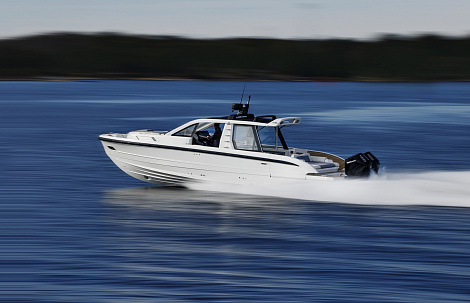
New Windy SR40 to debut in Palma
News
15.04.2025
The new 40-foot Windy sports model will make its debut at the Palma International Boat Show.
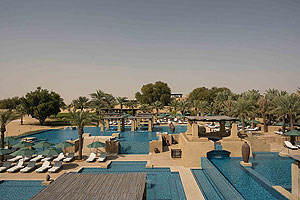
Bab Al Shams Desert Resort & spa
Hotel
03.03.2025
A resort in the desert, just a 45-minute ride from the centre of Dubai.
Nympheas: new flagship delivered by Turquoise
News
26.02.2025
The Turkish shipyard delivered the 79 metre yacht, formerly known as Project Toro. She has an underwater lounge.
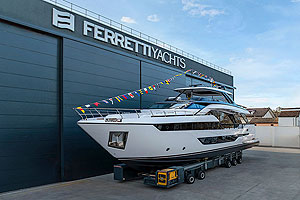
Perfect yacht
News
06.03.2025
The first hull of the new flybridge Ferretti Yachts 940 has been launched at the Cattolica shipyard.
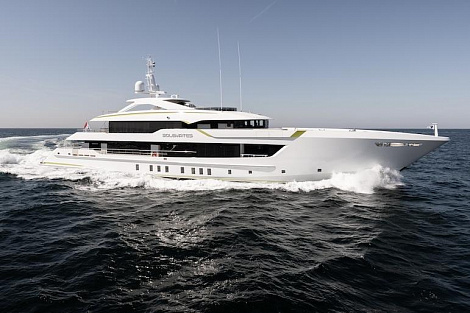
Heesen delivers 55m Solemates
News
03.05.2025
The yacht with FDHF type steel hull and gross tonnage of 760 GT will be presented at the Monaco Yacht Show.
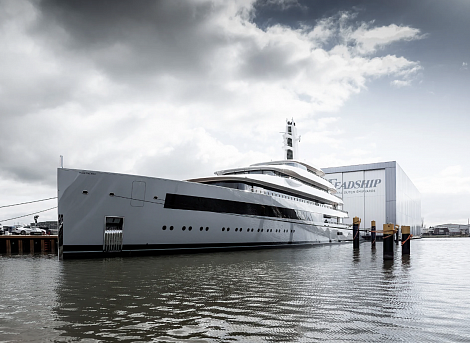
Feadship reveals the new megayacht Moonrise
News
17.03.2025
When completed, this 101 metre vessel will replace the previous 99.95 metre yacht of the same name.

Cadillac to compete in F1
Auto/Moto
05.03.2025
Cadillac to join the Formula One championship in 2026.
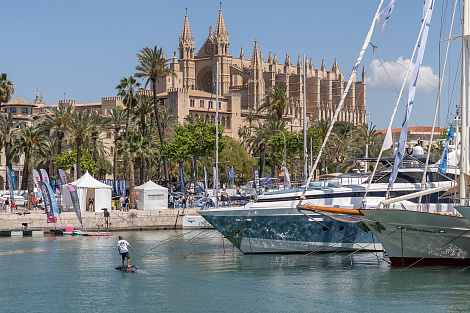
2025 Palma International Boat Show
News
25.04.2025
World premieres to see at the show in Palma de Mallorca (30.04—3.05)
